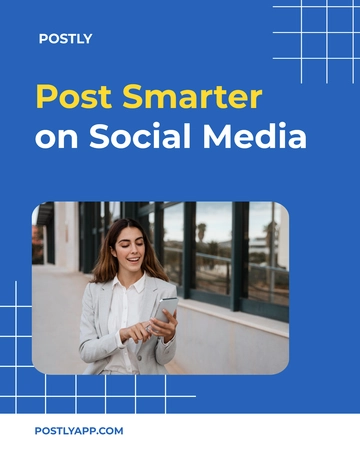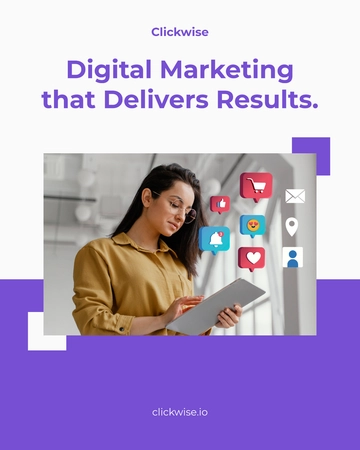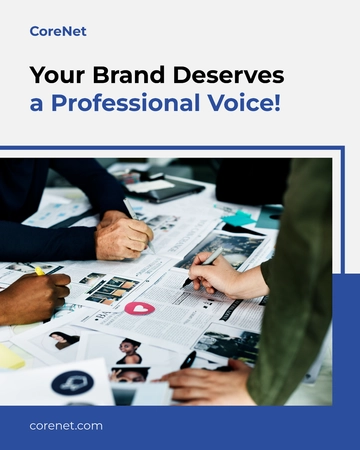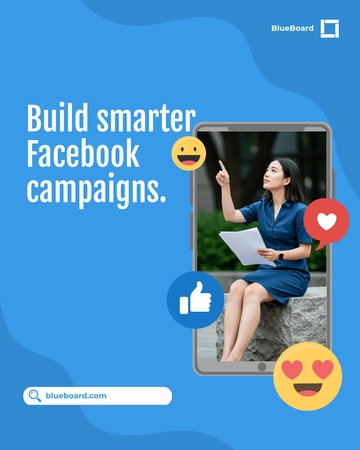Free Social Media Marketing Interaction Document
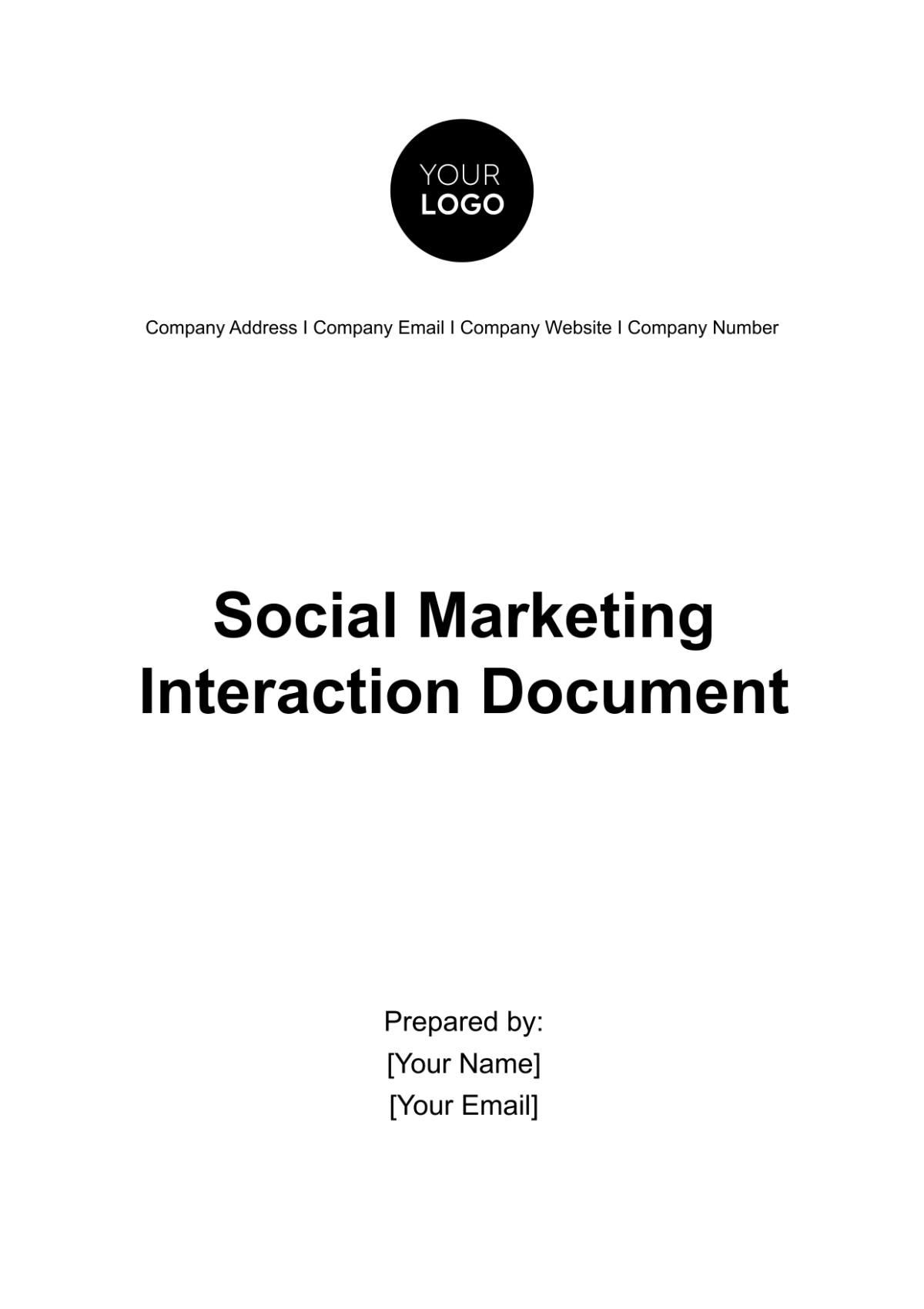
I. Introduction
Welcome to [Company Name]'s Social Media Marketing Interaction Document, your go-to guide for managing and executing meaningful interactions across our social media platforms. In the digital age, the way a brand communicates online is not just an extension of its customer service or marketing departments; it's a direct reflection of the brand itself. From the tone we set to the speed of our responses, every interaction serves to either build or erode brand equity. This is why this comprehensive guide is of paramount importance.
This document sets the standard procedures and guidelines that anyone responsible for representing [Company Name] on social media should adhere to. Whether you are dealing with direct messages, post comments, mentions, or shares, this guide ensures that all interactions align with [Company Name]'s mission, vision, and brand personality. It encompasses everything from the language we use, to the speed and nature of our responses, right down to the process of escalating more serious concerns.
The main objectives are multi-fold: we aim to build strong relationships with our audience, swiftly and efficiently resolve any issues or queries they may have, and maintain a consistent brand voice that resonates with our company values. All team members involved in social media interactions should familiarize themselves with this guide to perform their roles effectively. So, let's get started on a journey towards better, more effective social media engagement for [Company Name].
II. Objectives
The primary objectives of this Social Media Marketing Interaction Document are outlined below. Each objective serves as a cornerstone for the successful management of [Company Name]'s online interactions. By adhering to these objectives, we aim to elevate the quality of our social media engagement, thereby contributing to the overall success of our digital marketing strategy.
Build Relationships. The aim here is not just to attract followers, but to build meaningful relationships with them. Social media offers a unique opportunity for brands to engage directly with their audience, and we must capitalize on this. Through regular, meaningful, and value-added interactions, we can create a community around [Company Name] that will not only drive business but also serve as brand ambassadors in the long run.
Resolve Issues. Timely and effective issue resolution is crucial in building and maintaining trust. Whether it's a complaint, a query, or a request for more information, how we handle these matters can have a long-lasting impact on our brand perception. As part of this objective, we strive to acknowledge any customer complaints or questions within [time frame], aiming to resolve all issues within [time frame]. We adhere to a multi-step resolution process that ensures that the customer feels heard, valued, and satisfied.
Maintain Brand Voice. Consistency is key when it comes to brand representation. All social media interactions should be coherent with [Company Name]'s brand voice, character, and messaging guidelines. Whether responding to a complaint or engaging in casual conversation, it's essential that we maintain a tone that reflects the brand's values and ethos. This ensures that all interactions contribute positively to our brand identity and public perception.
III. Scope
The scope is comprehensive, encompassing all avenues of interaction between [Company Name] and our audience on social media platforms. The goal is to provide a standardized protocol for various types of engagements, ensuring that we consistently represent our brand in the most effective and cohesive manner possible.
Direct Messages. Direct messages, or DMs, are private conversations between the brand and individual users. These messages often involve customer service queries, detailed questions, or confidential discussions. It is imperative that these are responded to promptly and professionally, keeping in mind the privacy and individual concerns of each user. Direct messages should adhere to the same level of brand voice consistency as public interactions.
Comments on Posts. Comments appear below our published posts and are visible to anyone who sees the post. These can range from simple likes and short comments to questions or feedback about our products or services. Every comment presents an opportunity to engage directly with our audience. Whether the comments are positive or negative, our response should always be courteous, helpful, and in line with our brand voice.
Mentions. Mentions include instances where users specifically tag or name [Company Name] in their own posts or comments. Mentions are an essential part of building an online community, as they often indicate a user’s intent to engage with or discuss our brand with their followers. When [Company Name] is mentioned, it’s crucial to acknowledge it appropriately—whether through a like, a reply, or a reshare, depending on the context—again maintaining brand consistency in tone and messaging.
Retweets and Shares. Retweets (Twitter) and shares (Facebook, LinkedIn, etc.) involve users redistributing our original content to their followers. This type of interaction extends the reach of our brand and messages, often serving as an endorsement. While we may not directly interact with every retweet or share, monitoring them can provide valuable insights into what resonates with our audience. In some cases, particularly significant or high-impact shares may warrant a direct thank-you or acknowledgment, reinforcing positive relationships with engaged users.
IV. User Engagement Guidelines
This chapter outlines the standardized protocols for responding to various types of user interactions on social media. From general inquiries and complaints to praises and accolades, each interaction has a set of approved responses and responsible parties within [Company Name]. By adhering to these guidelines, we aim to ensure that all social media interactions are handled in a consistent, professional, and brand-aligned manner. Specific approved responses for each type of interaction can be found in Appendix A.
Type of Interaction | Approved Response | Responsible Person |
General Inquiry | Refer to Appendix A | [Customer Service] |
Complaints | Refer to Appendix A | [Customer Service] |
Praises | Refer to Appendix A | [Social Media Manager] |
V. Response Timeframes
In the fast-paced environment of social media, timely responses are crucial for maintaining customer satisfaction and a positive brand image. This chapter specifies the time frames within which different types of user interactions should be addressed. Adhering to these timeframes will help [Company Name] to effectively manage social media interactions while building and maintaining strong customer relationships.
Type of Interaction | Response Time | Additional Notes |
Direct Messages | Within 24 Hours | Consider automated responses for immediate acknowledgment |
Comments on Posts | Within 12 Hours | Prioritize addressing negative comments and questions |
Mentions | Within 6 Hours | Especially important if the mention is from an influencer or a potential business partner |
Retweets and Shares | Within 24 Hours | Thank the user for sharing your content, when applicable |
VI. Escalation Procedures
Not all social media interactions can be handled through standard procedures. Some may involve serious concerns, sensitive issues, or high-level business matters that require immediate and specialized attention. In these instances, it's crucial to have a structured escalation procedure to ensure these matters are dealt with by the appropriate parties swiftly and effectively. This chapter is dedicated to helping team members understand when and how to escalate such interactions to higher authority levels within [Company Name]. Please refer to the detailed escalation process outlined in Appendix B for complete guidance.
Examples of issues that may require escalation include but are not limited to:
Serious customer complaints that could have legal implications
Negative comments that are going viral and have the potential to harm the company's reputation
Direct interactions from influential personalities that could significantly impact the brand
Security issues such as hacking or impersonation attempts
By familiarizing yourself with the escalation process, you ensure that these critical matters are directed to the individuals with the requisite expertise and authority to address them effectively. This proactive approach helps mitigate risks, protect the brand, and offer higher-level solutions where needed.
VII. Crisis Management
In the age of digital communication, social media crises can escalate quickly and have long-lasting impacts on a brand's reputation. Therefore, it's crucial for [Company Name] to be well-prepared and have a robust Crisis Management Plan in place. While this manual provides extensive guidelines for regular social media interactions, crises often demand a separate, specialized plan. We urge all team members to familiarize themselves with the Crisis Management Plan, which is outlined in a separate document specifically designed for such high-stakes situations.
What Constitutes a Social Media Crisis?
Not all negative comments or criticisms escalate into a crisis. A social media crisis typically has one or more of the following characteristics:
It has a high potential for negative publicity.
It involves a significant volume of interactions or mentions.
It may have legal repercussions.
It could substantially impact the business financially.
Types of Social Media Crises:
The following are common types of social media crises that may occur:
Reputation Crisis: A situation where negative comments or reviews are rapidly spreading, damaging the brand's image.
Legal Crisis: An event such as a data breach or use of copyrighted materials that could lead to legal action against [Company Name].
Operational Crisis: Scenarios where business operations are affected, such as website downtime communicated via social channels, affecting customer trust.
Coordination and Communication
In times of crisis, a coordinated effort is required across multiple departments of the organization. This may include the Marketing, Legal, Customer Service, and Public Relations departments. Clear, transparent, and timely communication both internally among team members and externally with the public is critical.Crisis Resolution
After the crisis has been managed, it's crucial to analyze the events to understand how it escalated, how well the company responded, and what can be learned to prevent future crises. This post-mortem should involve all key stakeholders and result in actionable insights.
To handle a crisis situation effectively, always refer to the comprehensive Crisis Management Plan. Following the procedures detailed in that document will equip you to manage the situation proactively and minimize damage to [Company Name]'s reputation.
VIII. Monitoring and Metrics
In the ever-changing landscape of social media, effective monitoring and metrics are the compass by which we navigate. They provide us with invaluable insights into what's working, what isn't, and how we can improve. This chapter outlines the key performance indicators (KPIs) that [Company Name] focuses on for understanding and optimizing our social media interactions.
Engagement Rate. The Engagement Rate is an essential metric that gauges the level of interaction our content receives from our audience. It includes likes, shares, and comments and can serve as an indicator of how compelling and relevant our social media posts are. A high engagement rate often signals that the content is resonating with the audience, creating opportunities for increased brand loyalty and user retention. Conversely, a low engagement rate may be a warning sign that our content is not effectively capturing the audience's attention, necessitating a review and potential pivot in our content strategy.
Response Time. Response Time measures the average duration it takes for us to reply to user interactions, be it a direct message, comment, or other types of engagement. This metric is crucial for customer service quality and overall user experience. Prompt responses not only show that we are attentive and value our customer's time but can also mitigate negative situations before they escalate. A long average response time could indicate inefficiencies in the workflow or a lack of resources, calling for an internal review of our processes and perhaps the allocation of more resources to social media management.
By consistently monitoring these metrics, we can ensure that our social media strategies are aligned with our objectives and make data-driven decisions to continually improve our online interactions.
IX. Roles and Responsibilities
In any organization, clear delineation of roles and responsibilities is essential for seamless operations, especially when it comes to social media interactions which often require rapid and coordinated responses. The following table elaborates on the roles and responsibilities for the Social Media Marketing Interaction Document within [Company Name].
Role | Responsibility |
CEO | Final approval of the interaction plan. The CEO ensures that the plan aligns with the broader business strategy and objectives. |
Social Media Manager | Day-to-day management of interactions, including overseeing responses, maintaining brand voice, and executing approved strategies. They are also responsible for team training and updates on social media best practices. |
Customer Service | Responsible for handling customer queries and complaints. They are the frontline troops in resolving issues and fostering goodwill. They work closely with the Social Media Manager to ensure timely and effective communication. |
The CEO provides the final approval, ensuring that all social media interactions are in sync with the organization's goals and brand voice. The Social Media Manager is pivotal, serving as the operational hub for all social media activities, and is often the one to interact with the audience. The Customer Service team has a specialized role focusing on resolving queries and complaints, working in tandem with the Social Media Manager to provide a unified and positive experience for our users.
X. Appendix A: Pre-approved Responses
Providing consistent and timely responses to common types of interactions on social media is crucial for maintaining brand integrity and customer satisfaction. The following list contains pre-approved canned responses that team members can refer to when responding to various types of interactions.
A. General Inquiry:
"Thank you for reaching out to [Company Name]. How can we assist you today?"
"We appreciate your interest in [Company Name]. What would you like to know more about?"
B. Complaints:
"We're really sorry to hear you're experiencing this issue. Can you please DM us with more details so we can resolve it?"
"Thank you for bringing this to our attention. We apologize for any inconvenience. Our team is looking into it."
C. Praises:
"Thank you so much for the kind words! We're thrilled to hear you're happy with [Product/Service]."
"We're so glad you had a great experience! Thank you for choosing [Company Name]."
D. Product Inquiry:
“Thank you for your interest in [Product]. Would you like some more information on its features?"
"We're excited you're considering [Product]. How can we assist you in making your decision?"
E. Service-related:
"Our team is always here to help! What do you need assistance with?"
"Thank you for using [Service]. How can we make your experience even better?"
This list is by no means exhaustive but should cover a majority of the interactions team members will encounter. Please ensure that your responses remain aligned with the brand voice of [Company Name] as outlined in the Social Media Marketing Interaction Document.
XI. Appendix B: Emergency Contact List
In the event of a crisis or emergency situation that requires immediate attention, the following table lists key contacts responsible for different types of issues. Please follow the escalation process as outlined in the document and reach out to the appropriate contact person as swiftly as possible.
Type of Emergency | Contact Person | Role | Contact Details |
Data Breach | [Name] | IT Manager | [Email, Phone Number] |
Negative Publicity | [Name] | PR Manager | [Email, Phone Number] |
Legal Issue | [Name] | Legal Advisor | [Email, Phone Number] |
Budget Crisis | [Name] | Financial Manager | [Email, Phone Number] |
Critical Bug | [Name] | Tech Support Lead | [Email, Phone Number] |
Note: This is an emergency contact list and should only be used in specific, pre-defined crisis situations as mentioned in the escalation procedures. Immediate action is crucial in these situations; delays could exacerbate the issue.
This document may be updated periodically, and it is the responsibility of the social media team to stay updated with the latest version.
- 100% Customizable, free editor
- Access 1 Million+ Templates, photo’s & graphics
- Download or share as a template
- Click and replace photos, graphics, text, backgrounds
- Resize, crop, AI write & more
- Access advanced editor
Unlock the potential of your social media marketing strategies with our Interactive Document Template. Designed for efficiency, this editable and customizable resource, available exclusively on Template.net, empowers professionals to optimize keyword usage and streamline content creation. Utilize our AI Editor Tool for seamless customization and unparalleled results.
You may also like
- Instagram Ad
- Instagram Banner
- Instagram Frame
- Instagram Post
- Instagram Profile Picture
- Instagram Story
- Instagram Story Highlights
- Twitter Ad
- Twitter Header
- Twitter Post
- LinkedIn Photo
- Linkedin Post
- YouTube
- Youtube Ad
- Youtube Banner
- YouTube Channel Art
- YouTube End Screen
- Youtube Profile Photo
- YouTube Thumbnail
- Facebook Ad
- Facebook Cover
- Facebook Post
- Facebook Profile Frame
- Facebook Profile Photo
- Twitch Offline Banner
- Linkedin Banner
- Twitch Overlay
- Whatsapp Status
- Reddit Banner
- Social Media Banner
- Social Media Clipart
- Social Media Plan
- Social Media Contract
- Social Media Planner
- Social Media Report
- Social Media Agreement
- Social Media Business Card
- Social Media Proposal
- Social Media Presentation
